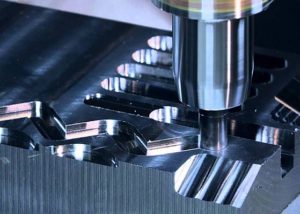The development of CNC precision milling has changed the way that prototyping and manufacturing work. The process can be done quickly, precisely, and cheaply for a variety of products.

What is CNC Precision Milling?
CNC precision milling is a process that uses computer-controlled machines to create parts from a solid piece of material. The machine moves the part around in a three-dimensional space, making incredibly precise cuts that can result in highly detailed products.
How it Works
CNC precision milling is a process that uses rotary cutting and milling machines to produce parts with extremely tight tolerances, often down to the thousandth of an inch. The process begins by creating a digital model of the part to be milled. This model is then transferred into the machine's computerized control system, which directs the cutting and milling tools to create the part. Because CNC Precision Milling requires precision in both the setup and operation of the machines, it is often used in industries such as aerospace, automotive, and medical devices.
Types of CNC Precision Milling Machines
There are several types of CNC precision milling machines, each with its own set of capabilities and limitations. Some common types of mills include 3D printers, horizontal machining centers, Vertical Machining Centers (VMCs), and CNC Routers. Each type of machine has its own set of advantages and limitations, which are important to consider when choosing the best one for a particular project. For example, a VMC is very powerful but can be expensive and difficult to use, while a 3D printer is simple but may not be able to produce high-quality parts.
Conclusion
As the world moves forward, machines are becoming more and more important in the manufacturing process. One type of machine that is especially useful for precision milling is CNC technology. For more information about the CNC precision milling, contact us today!
